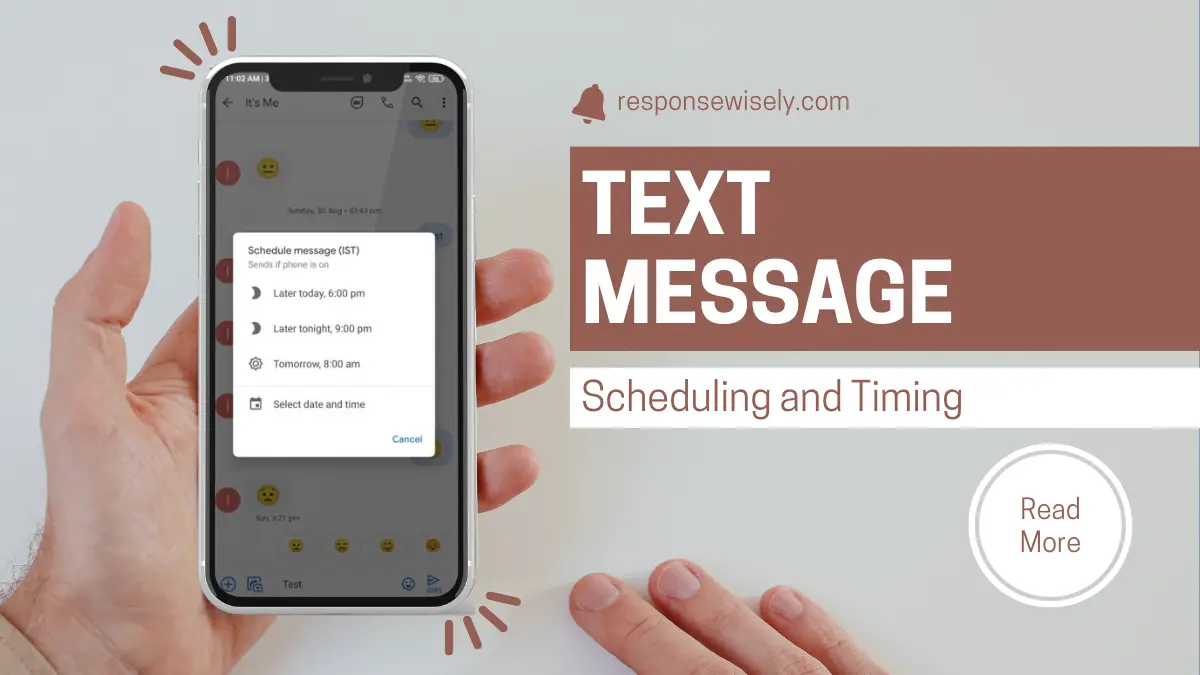Are you making the most of your text message scheduling and timing? As a seasoned blogger, I’ve delved deep into the intricate world of SMS strategies. Timing is everything when it comes to sending text messages that truly resonate with your audience. In this text, I’ll share my expert insights on how to optimize your message scheduling for maximum impact.
From understanding the best days of the week to send messages to deciphering the ideal time of day for maximum engagement, I’ve got you covered. As I reveal the secrets behind successful text message campaigns, you’ll learn how to navigate the nuances of scheduling and timing to boost your open rates and click-throughs. Stay tuned for actionable tips that will take your SMS marketing to the next level.
Join me on this journey as we unravel the complexities of text message scheduling and timing. With my insider knowledge and practical advice, you’ll soon be crafting messages that captivate your audience and drive results. Let’s immerse and unlock the true potential of your SMS strategy.
Understanding Text Message Scheduling
Importance of Timing in Text Message Marketing
In SMS marketing, timing plays a crucial role. Messaging when your audience is most likely to engage can significantly impact open rates and click-throughs. It’s essential to consider factors like time zone differences and daily routines to schedule messages effectively.
- Segment your audience based on their preferences and behaviors.
- Use A/B testing to determine the optimal sending times.
- Analyze data regularly to adjust and refine your scheduling strategy.
- Consider special occasions and holidays for targeted messages.
| Data | Statistics |
|---|---|
| Open Rate | 98% of SMS are read within 3 minutes |
| Click-Through Rate | Average CTR is 36% for SMS marketing |
Factors to Consider When Choosing the Right Timing
Audience Behavior and Preferences
Understanding audience behavior is crucial. Consider when they are most active and likely to engage with your messages. Tailoring your send times to match their preferences can significantly impact open and click-through rates.
Time Zone Considerations
Don’t overlook the importance of time zones. Sending messages at the right time for your target audience’s location ensures they receive them during waking hours. Adjusting your schedule accordingly can boost overall campaign effectiveness.
Enhancing Engagement Through Optimal Timing
Optimizing message timing is key to boosting engagement. Experiment with different send times to identify when your audience is most responsive. Analyzing data on open rates and click-through rates can help pinpoint the optimal timing for your SMS campaigns.
The Science Behind Text Message Timing
Psychological Factors that Influence Response Rates
When it comes to text message timing, understanding psychological factors that influence response rates is crucial. People’s moods and receptiveness vary throughout the day, affecting how they engage with messages. By considering emotional states and mindsets, I can strategically schedule texts to align with when recipients are most likely to be receptive.
Impact of Day and Time on Message Effectiveness
The day and time you choose to send text messages can significantly impact their effectiveness. Research shows that Mondays tend to have higher response rates, while weekends are generally less favorable for engagement. Also, early mornings and late afternoons are popular times for sending messages as people are more likely to check their phones during these hours.
Key Takeaways
- Understand the importance of timing in text message marketing: Timing can significantly impact open rates and click-throughs, so send messages when your audience is most likely to engage.
- Segment your audience and use A/B testing for optimal sending times: Tailor your send times based on audience preferences and behaviors, and use data analysis to refine your scheduling strategy.
- Consider factors like time zones and special occasions: Adjust your messaging schedule to accommodate time zone differences and leverage holidays for targeted messages.
- Enhance engagement through optimal timing: Experiment with different send times to identify when your audience is most responsive, and analyze open rates and click-through rates to optimize your SMS campaigns.
- Understand psychological factors and the impact of day and time on message effectiveness: Consider recipients’ emotional states and mood variations throughout the day to strategically schedule texts, and be mindful that Mondays and specific hours tend to yield higher response rates.
Conclusion
Timing is crucial when it comes to text message scheduling. Understanding the psychological nuances that influence response rates is key to crafting effective communication strategies. By aligning message schedules with recipients’ emotional states, we can maximize engagement and drive better results. Remember, Mondays are prime for sending texts, while weekends may not yield the same response rates. Early mornings and late afternoons are ideal windows for reaching your audience, as these times coincide with peak phone usage. By mastering the intricacies of text message timing, we can elevate our messaging game and connect more effectively with our audience.
Frequently Asked Questions
What factors should be considered when timing text messages?
When timing text messages, it is essential to consider recipients’ emotional states throughout the day. Factors like moods, receptiveness, and daily routines influence response rates significantly.
Why is it important to align text schedules with recipients’ emotional states?
Aligning text schedules with recipients’ emotional states is crucial as it enhances engagement and interaction with messages. Understanding when individuals are most receptive can improve the effectiveness of communication.
Which days tend to yield higher response rates for text messages?
Mondays typically yield higher response rates for text messages, as people are more focused and responsive after the weekend break.
What are the popular times for sending text messages during the day?
Early mornings and late afternoons are identified as popular times for sending text messages due to increased phone usage and availability during these hours.

